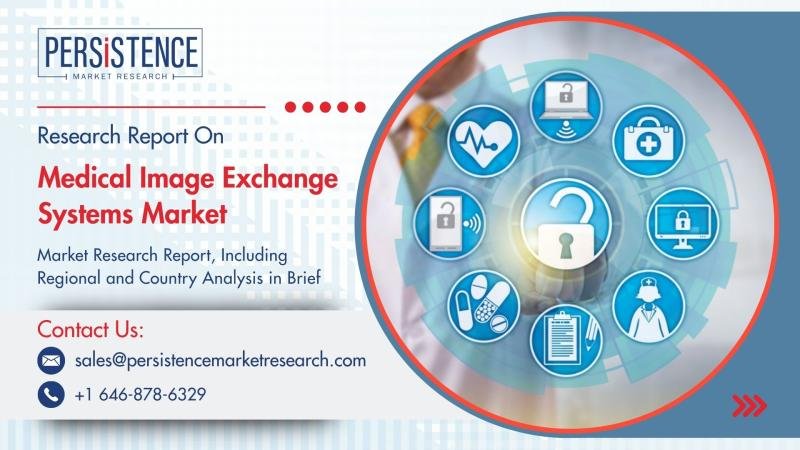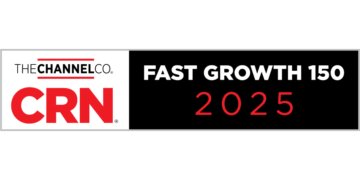The medical image exchange systems market is rapidly evolving, driven by the increasing need for efficient healthcare data management and seamless sharing of medical imaging across diverse healthcare facilities. According to the latest research by Persistence Market Research, this global market was valued at approximately US$ 3.75 billion in 2022. It is projected to grow robustly at a CAGR of 7.8%, reaching nearly US$ 7.97 billion by 2032. This growth highlights the rising demand for advanced medical image exchange solutions that enhance diagnostic accuracy, speed up clinical decision-making, and improve patient outcomes.
The key drivers behind this market growth include technological advancements in cloud computing, increasing adoption of digital healthcare systems, and the growing integration of AI-powered image analytics. Among the various product segments, cloud-based medical image exchange software stands out as the fastest-growing solution due to its scalability, accessibility, and cost-effectiveness. Geographically, North America leads the market owing to the well-established healthcare infrastructure, high adoption of cutting-edge technologies, and supportive government initiatives promoting health information exchange standards. Additionally, the presence of major industry players and continuous investments in healthcare IT infrastructure further consolidate North America’s leading position in the market.
Get a Sample PDF Brochure of the Report (Use Corporate Email ID for a Quick Response): https://www.persistencemarketresearch.com/samples/11464
Key Highlights from the Medical Image Exchange Systems Market Report
➤ The global market is expected to nearly double from US$ 3.75 billion in 2022 to US$ 7.97 billion by 2032.
➤ Cloud-based image exchange software dominates the product segment with the highest CAGR.
➤ Hospitals constitute the largest end-user segment due to the critical need for image sharing in clinical workflows.
➤ North America leads the regional market, followed closely by Europe and East Asia.
➤ Growing adoption of AI and machine learning technologies accelerates market demand.
➤ Increasing need for compliance with healthcare data standards drives investments in image exchange systems.
Market Segmentation Overview
The medical image exchange systems market is segmented primarily by solution type, end user, and region. Under solution types, the market divides into medical image exchange software, physical media, and medical image exchange services. Medical image exchange software further breaks down into cloud-based/web-based platforms, which are rapidly gaining traction due to their remote accessibility and integration capabilities. Physical media, such as CDs and DVDs, remain in use but are steadily declining as healthcare providers shift toward digital and cloud solutions for faster and more secure image sharing. Meanwhile, professional services like consulting, support, and managed services play an important role in system implementation and maintenance, ensuring smooth operation for healthcare providers.
In terms of end users, hospitals dominate the market due to their high volume of imaging procedures and the critical need for efficient data sharing across departments and with external specialists. Diagnostic centers and clinical research institutes also represent significant segments as they increasingly rely on image exchange systems to collaborate on research and diagnostics. Educational institutes use these systems for training and academic purposes, though their market share is smaller. Geographic segmentation reveals North America as the leader, followed by Europe and East Asia, with increasing adoption rates in South Asia & Pacific and the Middle East & Africa due to rising healthcare digitization efforts.
Regional Insights: Trends and Developments
North America remains the foremost region in the medical image exchange systems market, driven largely by the United States, which boasts advanced healthcare infrastructure and progressive policies supporting electronic health records (EHR) interoperability. Investments in cloud-based healthcare IT solutions, coupled with high awareness among healthcare providers, foster rapid adoption. Furthermore, stringent regulatory standards such as HIPAA ensure the secure exchange of patient data, increasing demand for compliant image exchange platforms.
Europe also demonstrates strong market growth due to government-backed initiatives encouraging healthcare digitization and data exchange across member countries. Nations like Germany, the UK, and France are at the forefront of adopting interoperable health IT systems. East Asia is emerging as a fast-growing market, propelled by increasing healthcare expenditures, expanding hospital networks, and government support for digital health innovation in countries such as China, Japan, and South Korea. South Asia & Pacific and the Middle East & Africa regions are gradually increasing their adoption rates, supported by growing investments in healthcare infrastructure and rising demand for efficient diagnostic services.
Market Drivers
The global medical image exchange systems market benefits from several powerful growth drivers. First, the escalating demand for faster and more accurate diagnostic workflows necessitates seamless image sharing among healthcare professionals. This demand is fueled by the increasing prevalence of chronic diseases and a growing aging population, requiring frequent imaging and consultations. Second, technological advancements, especially in cloud computing and AI-based image analysis, facilitate the efficient storage, retrieval, and exchange of large imaging files, reducing turnaround time and enabling better clinical decisions.
Another critical driver is the widespread digital transformation in healthcare, including the adoption of electronic health records and telemedicine. Medical image exchange systems complement these digital tools by ensuring that imaging data is accessible and shareable across multiple care settings. Regulatory frameworks pushing for interoperability and data security also drive investments in compliant image exchange platforms. Collectively, these factors propel market growth by encouraging healthcare organizations to implement sophisticated image exchange systems to enhance patient care and operational efficiency.
Market Restraints
Despite promising growth, the medical image exchange systems market faces several challenges. Data security and privacy concerns remain significant restraints, as healthcare organizations must ensure compliance with strict regulations like HIPAA and GDPR. Any breach or mismanagement of sensitive patient imaging data can lead to legal consequences and loss of trust. Additionally, the high initial investment and maintenance costs of advanced image exchange systems can deter smaller healthcare providers from adopting these technologies, particularly in developing regions.
Interoperability issues also pose a barrier to market growth. Diverse imaging equipment and proprietary software formats make it challenging to create seamless, standardized data exchange across different healthcare systems. This fragmentation hampers the smooth flow of information and increases operational complexity. Furthermore, resistance to change from healthcare professionals accustomed to traditional methods of image handling can slow down adoption rates. These factors collectively act as hurdles that market players must address to ensure sustained growth.
Market Opportunities
The future of the medical image exchange systems market is rich with opportunities driven by continuous innovation and emerging healthcare needs. The integration of AI and machine learning technologies presents enormous potential for enhancing image analysis, automating workflows, and improving diagnostic accuracy. Vendors offering AI-enabled platforms stand to capture significant market share by delivering value-added services beyond mere image exchange.
Expansion into emerging markets such as Asia-Pacific, Latin America, and the Middle East offers vast growth prospects due to increasing healthcare infrastructure investments and government initiatives promoting digital health. Additionally, the rising trend of telehealth and remote patient monitoring creates new use cases for image exchange systems, especially cloud-based solutions that support remote consultations and second opinions. Partnerships between technology providers and healthcare organizations to develop tailored image exchange solutions can further drive market penetration and adoption in diverse clinical settings.
For Customized Insights on Segments, Regions, or Competitors, Request Personalized Purchase Options @ https://www.persistencemarketresearch.com/request-customization/11464
Frequently Asked Questions (FAQs)
➤ How Big is the Medical Image Exchange Systems Market?
➤ Who are the Key Players in the Global Medical Image Exchange Systems Market?
➤ What is the Projected Growth Rate of the Market?
➤ What is the Market Forecast for Medical Image Exchange Systems for 2032?
➤ Which Region is Estimated to Dominate the Industry through the Forecast Period?
Company Insights
✦ Vaultara
✦ IBM Corporation
✦ GE Healthcare (A General Electric Company)
✦ Koninklijke Philips N.V.
✦ Sectra AB
✦ Nuance Communications, Inc.
✦ eHealth Technologies, Inc.
✦ Change Healthcare
✦ PaxeraHealth
✦ DICOM Grid, Inc. (dba Ambra Health)
✦ DataFirst
✦ OneMedNet Corporation
✦ IMEXHS
✦ Trice Imaging, Inc.
Recent Developments
■ IBM Corporation recently launched an AI-powered image exchange platform designed to improve diagnostic workflows and enhance data security.
■ Sectra AB expanded its cloud-based image exchange services to new markets in Asia-Pacific, accelerating its global footprint.
This detailed overview of the medical image exchange systems market highlights its dynamic growth trajectory and underscores the technological innovations shaping the future of healthcare data management. With rising demand for efficient image sharing and AI integration, this market promises exciting opportunities for providers and end users alike.
Explore the Latest Trending “Exclusive Article” @
• https://www.manchesterprofessionals.co.uk/article/marketing-pr/91544/cooling-fabrics-market-technological-advancements-to-watch
• https://apnewswire.hashnode.dev/cooling-fabrics-market-applications-in-sportswear-and-athleisure
• https://industrynewswire.substack.com/p/cooling-fabrics-market-innovations
• https://hackmd.io/@apnewswire/HJnbxk6Zex
• https://www.instagram.com/p/DJ9yWeOiCir/
Contact Us:
Persistence Market Research
G04 Golden Mile House, Clayponds Lane
Brentford, London, TW8 0GU UK
USA Phone: +1 646-878-6329
UK Phone: +44 203-837-5656
Email: sales@persistencemarketresearch.com
Web: https://www.persistencemarketresearch.com
About Persistence Market Research:
At Persistence Market Research, we specialize in creating research studies that serve as strategic tools for driving business growth. Established as a proprietary firm in 2012, we have evolved into a registered company in England and Wales in 2023 under the name Persistence Research & Consultancy Services Ltd. With a solid foundation, we have completed over 3600 custom and syndicate market research projects, and delivered more than 2700 projects for other leading market research companies’ clients.
Our approach combines traditional market research methods with modern tools to offer comprehensive research solutions. With a decade of experience, we pride ourselves on deriving actionable insights from data to help businesses stay ahead of the competition. Our client base spans multinational corporations, leading consulting firms, investment funds, and government departments. A significant portion of our sales comes from repeat clients, a testament to the value and trust we’ve built over the years.
This release was published on openPR.

















